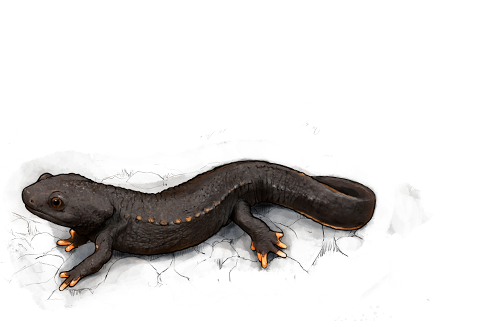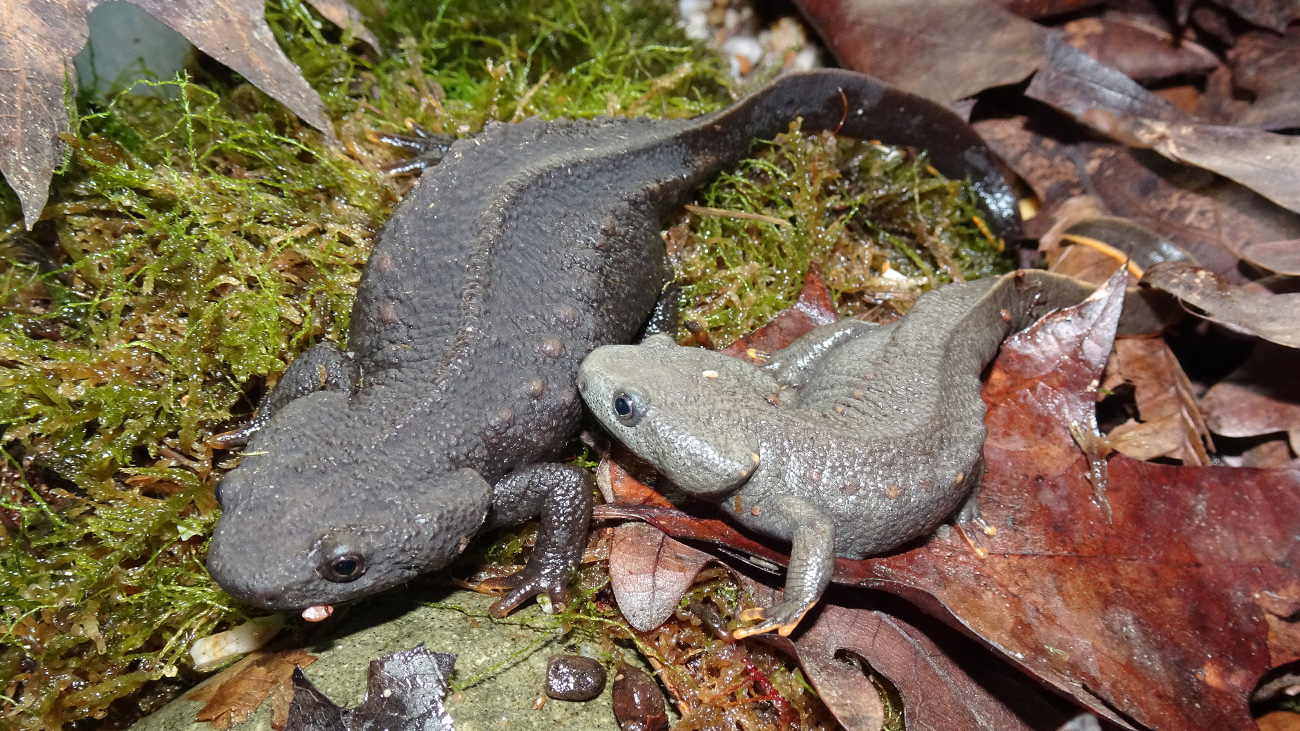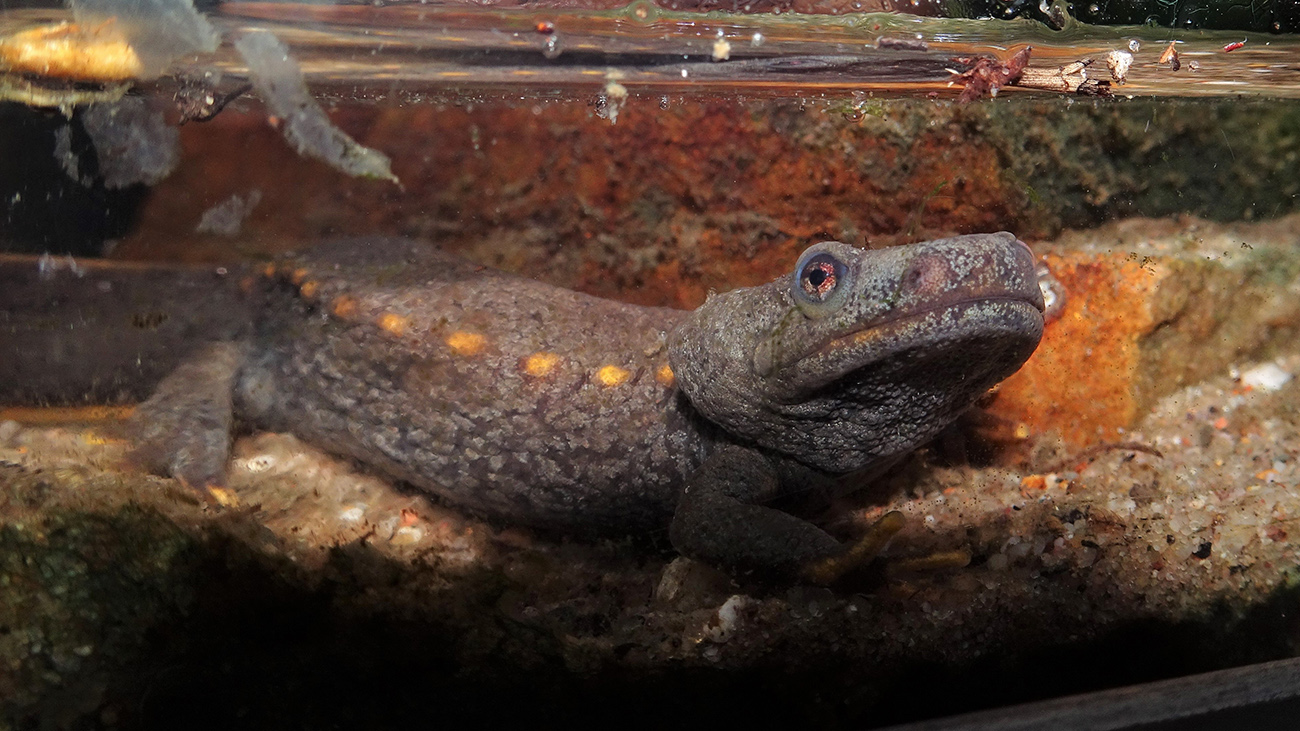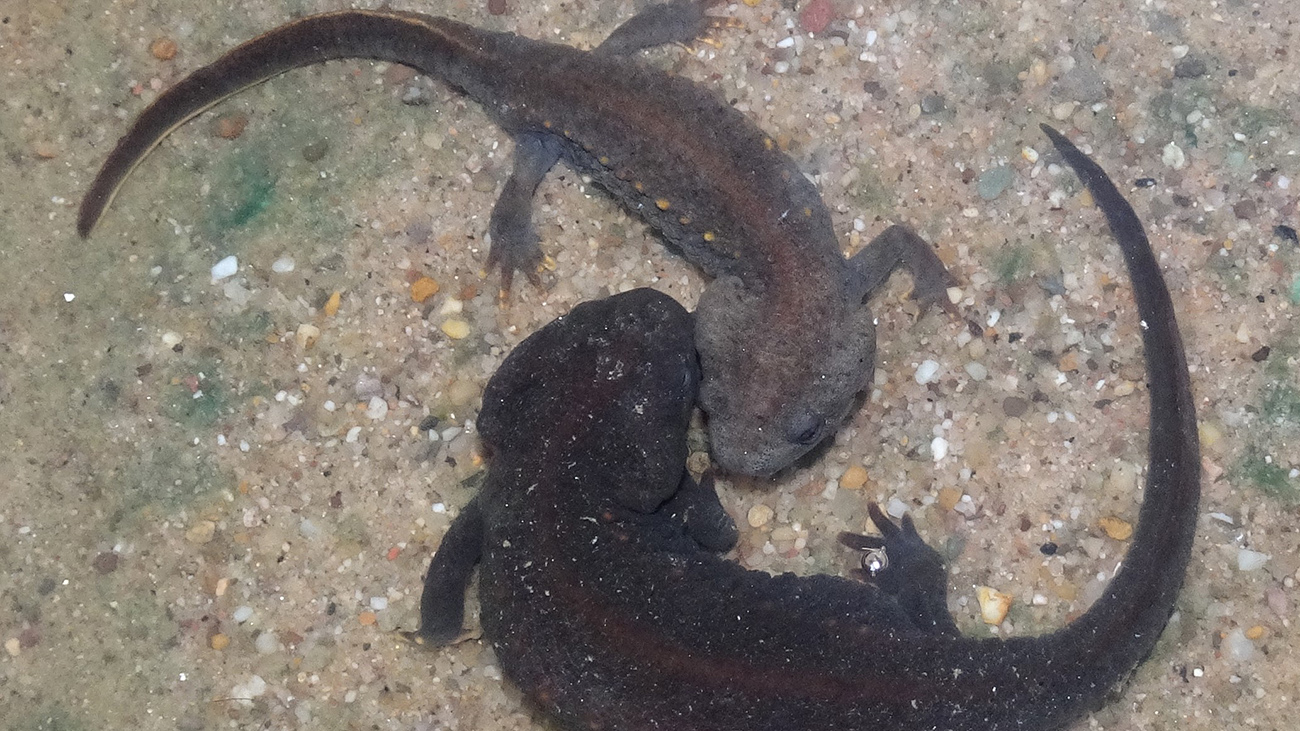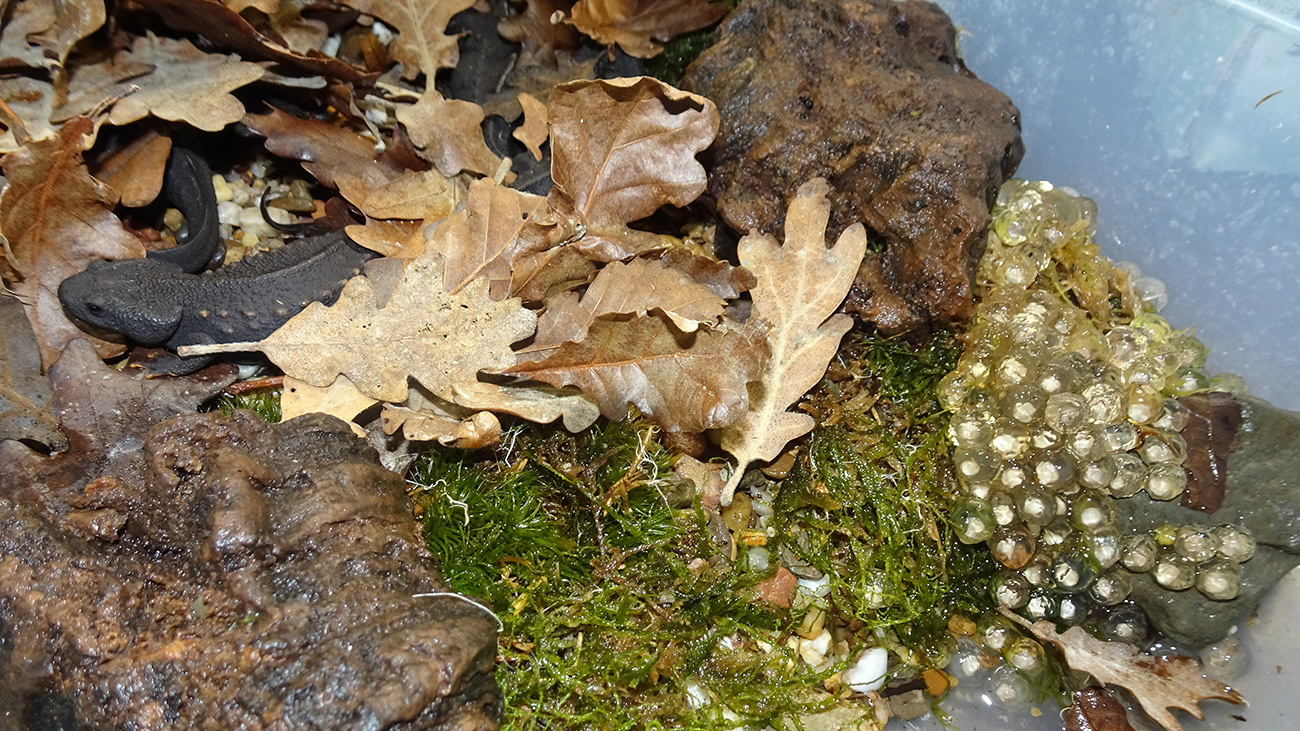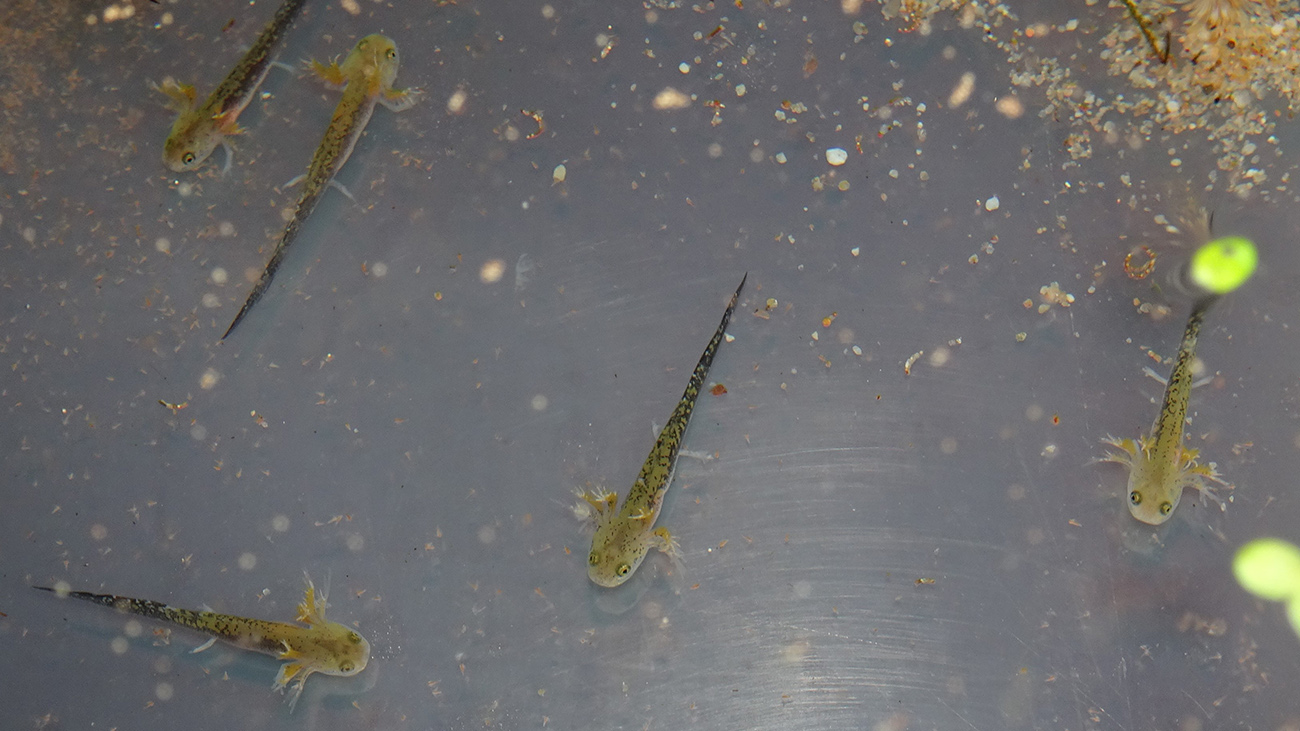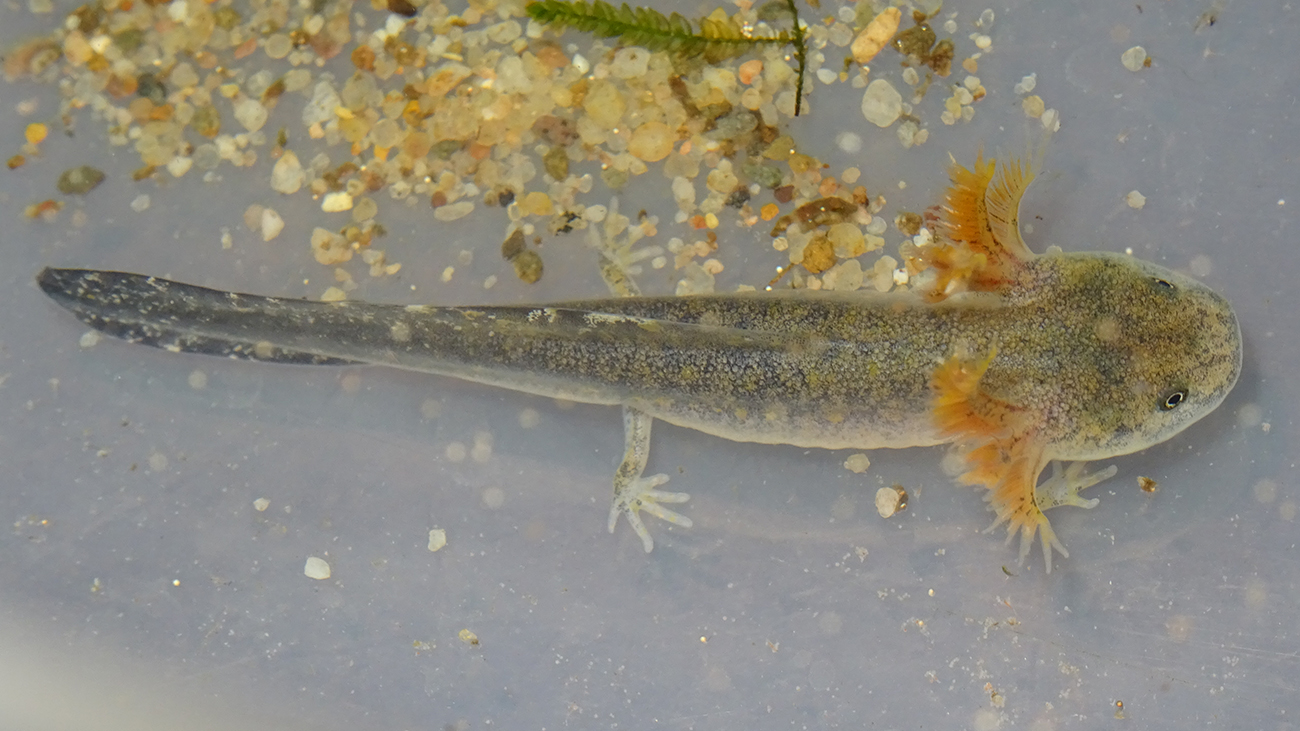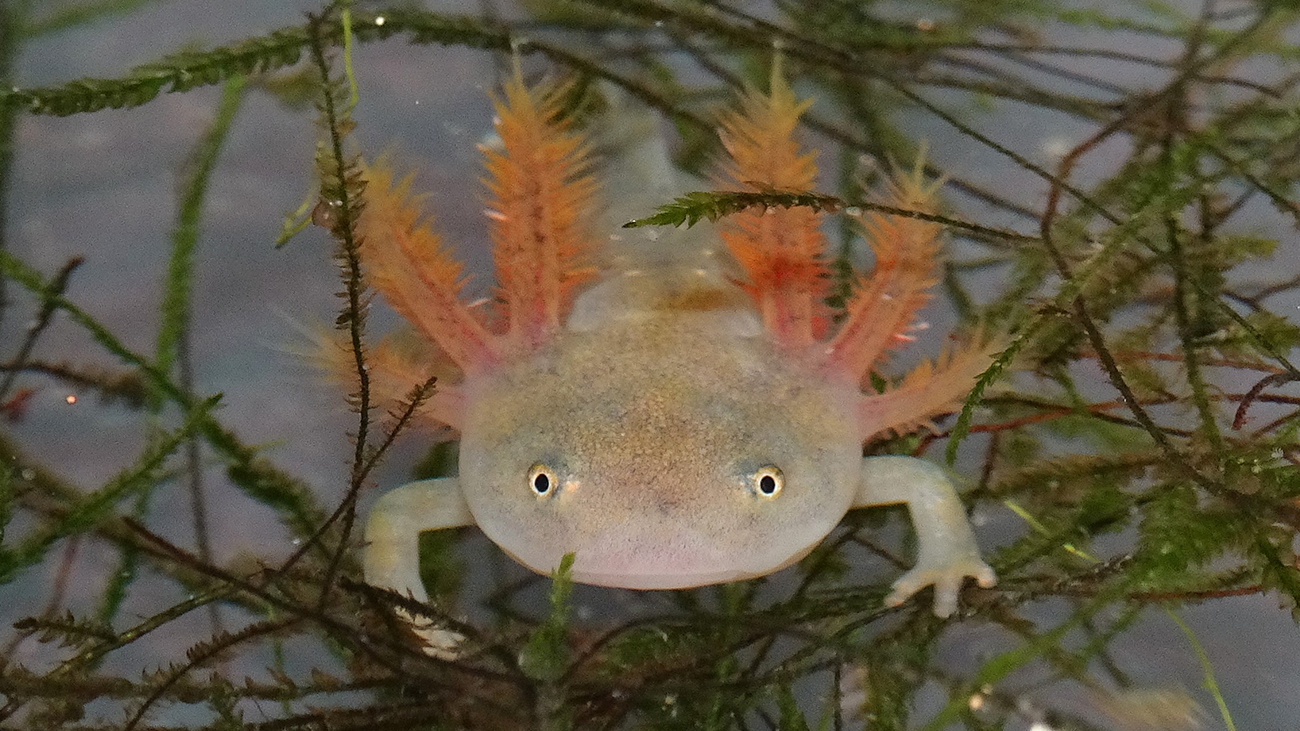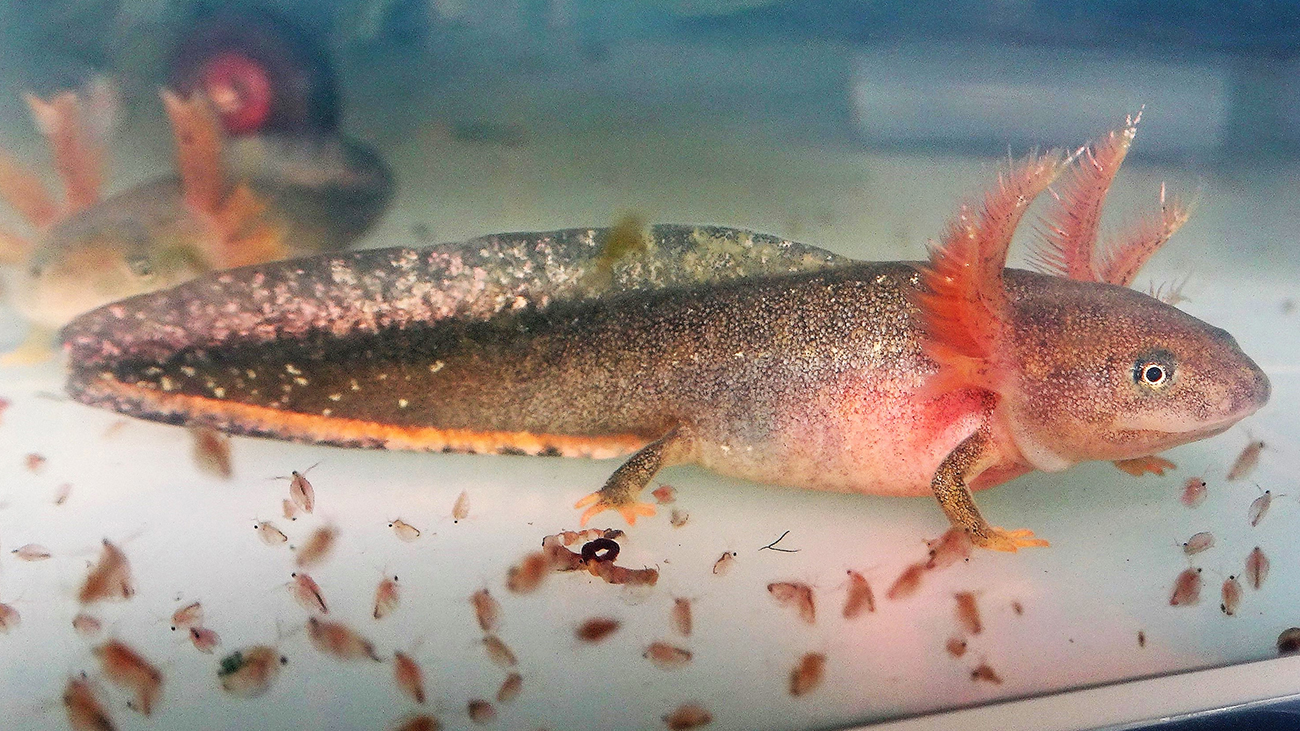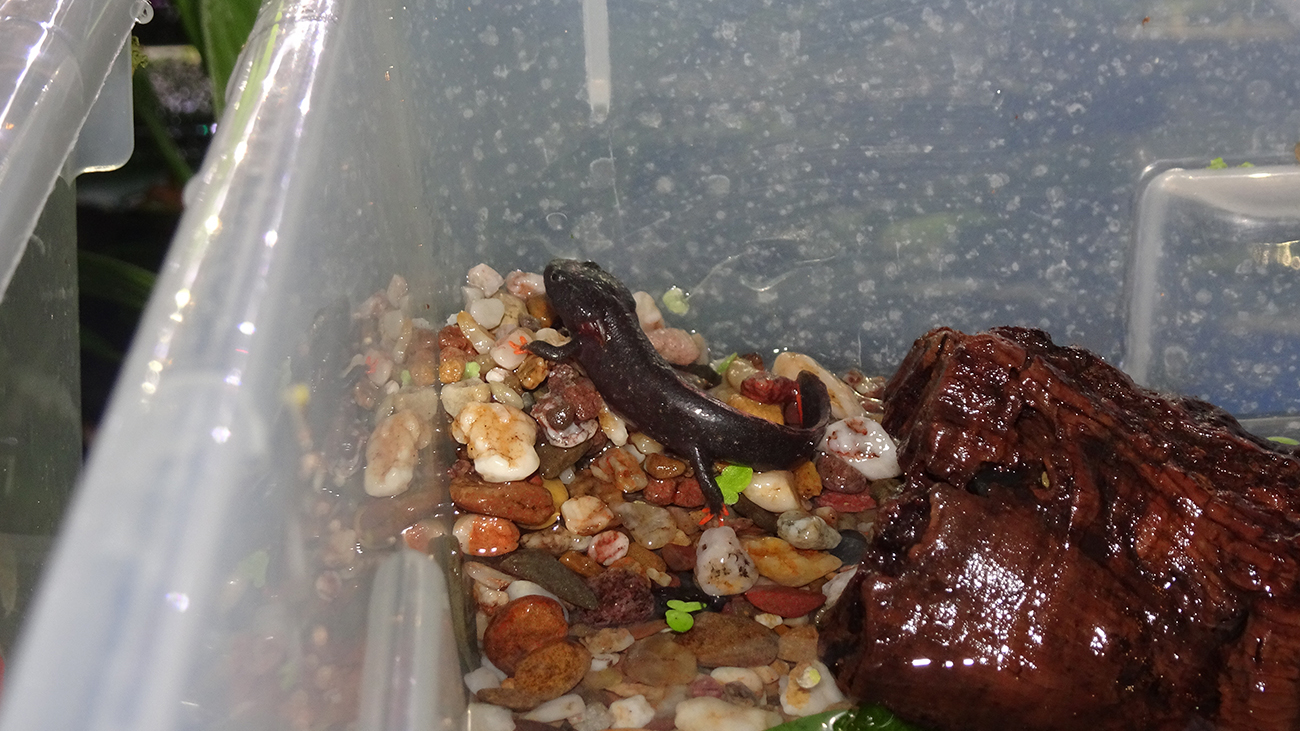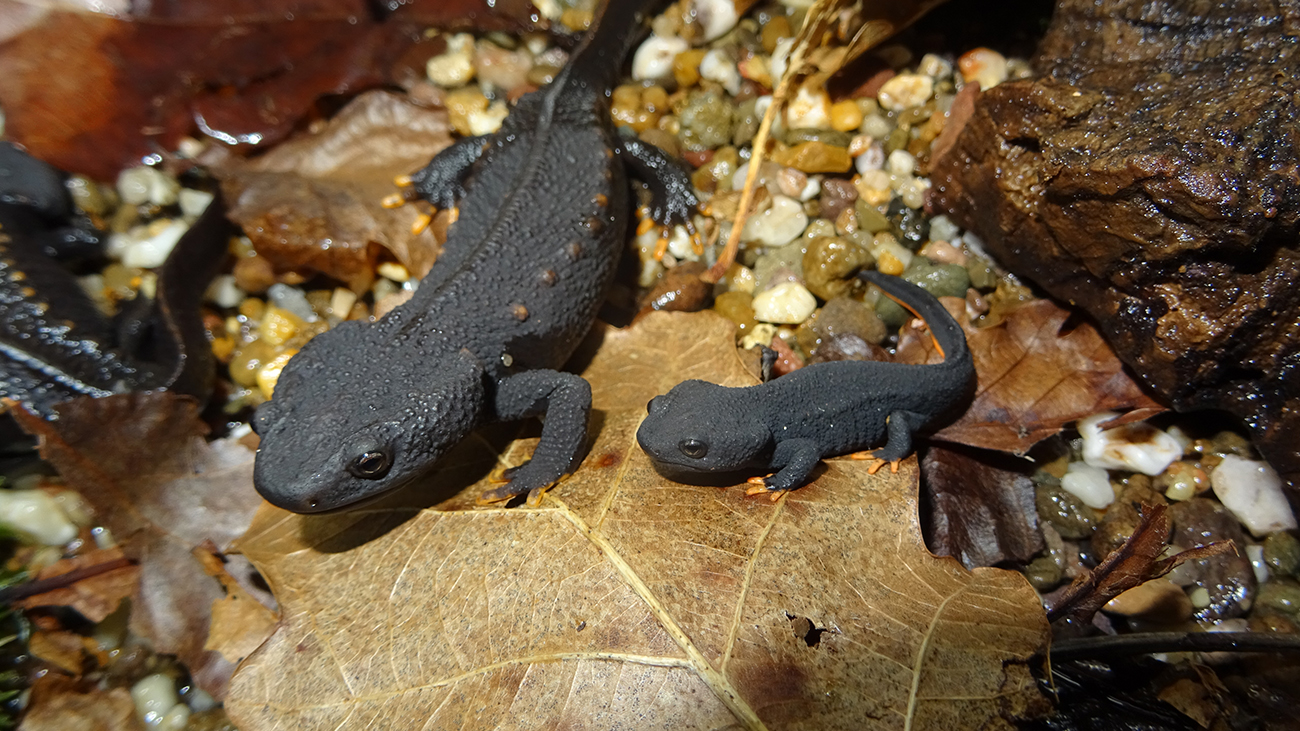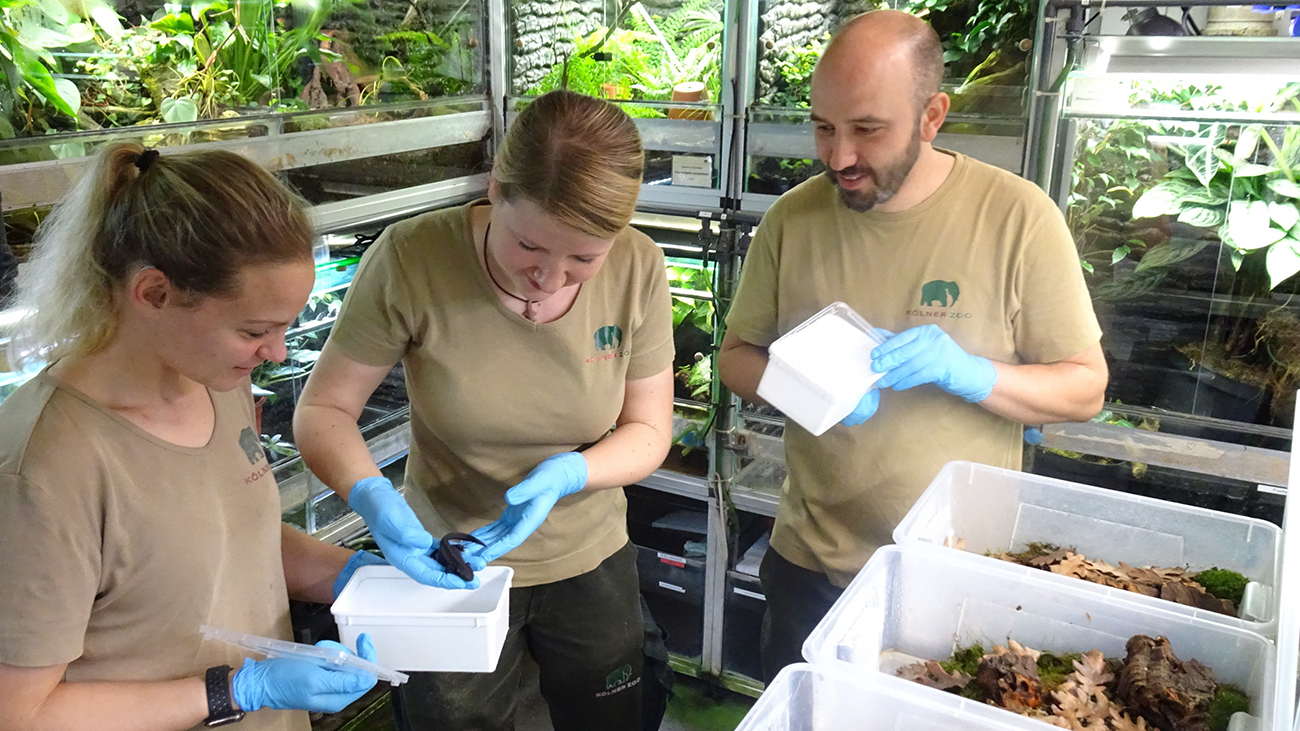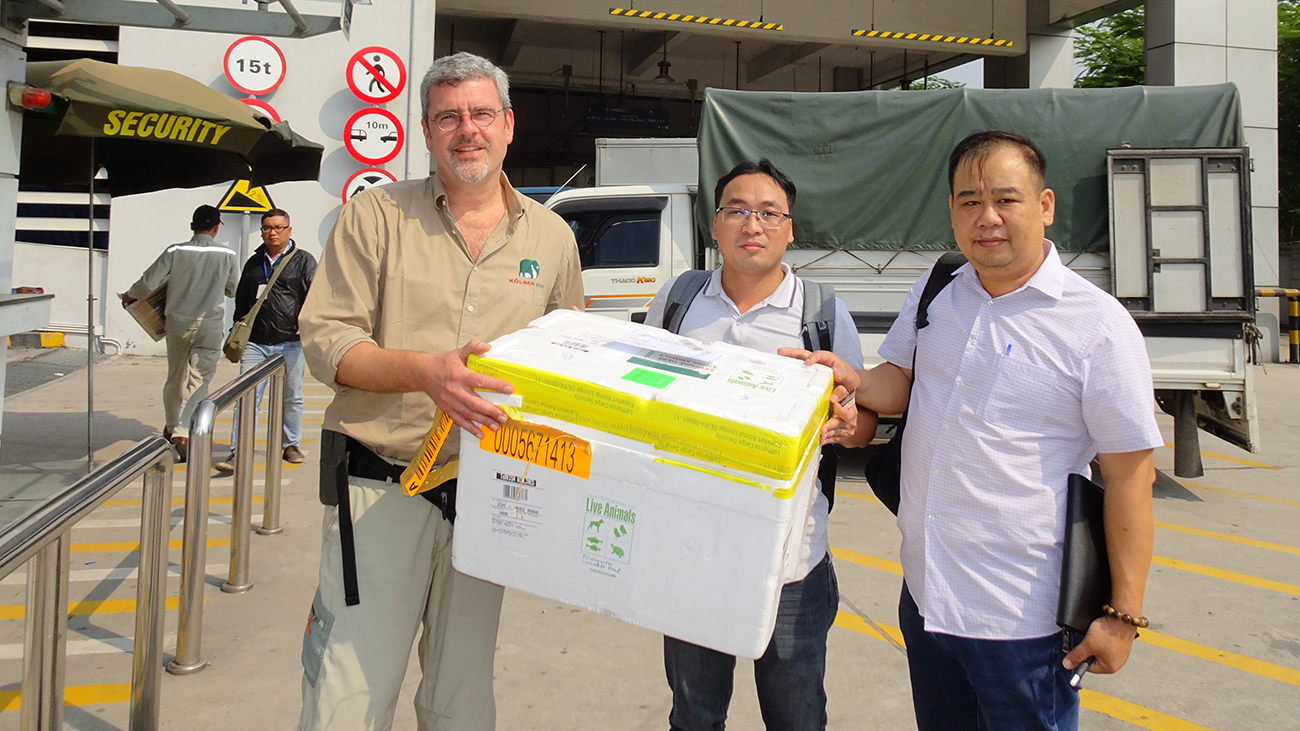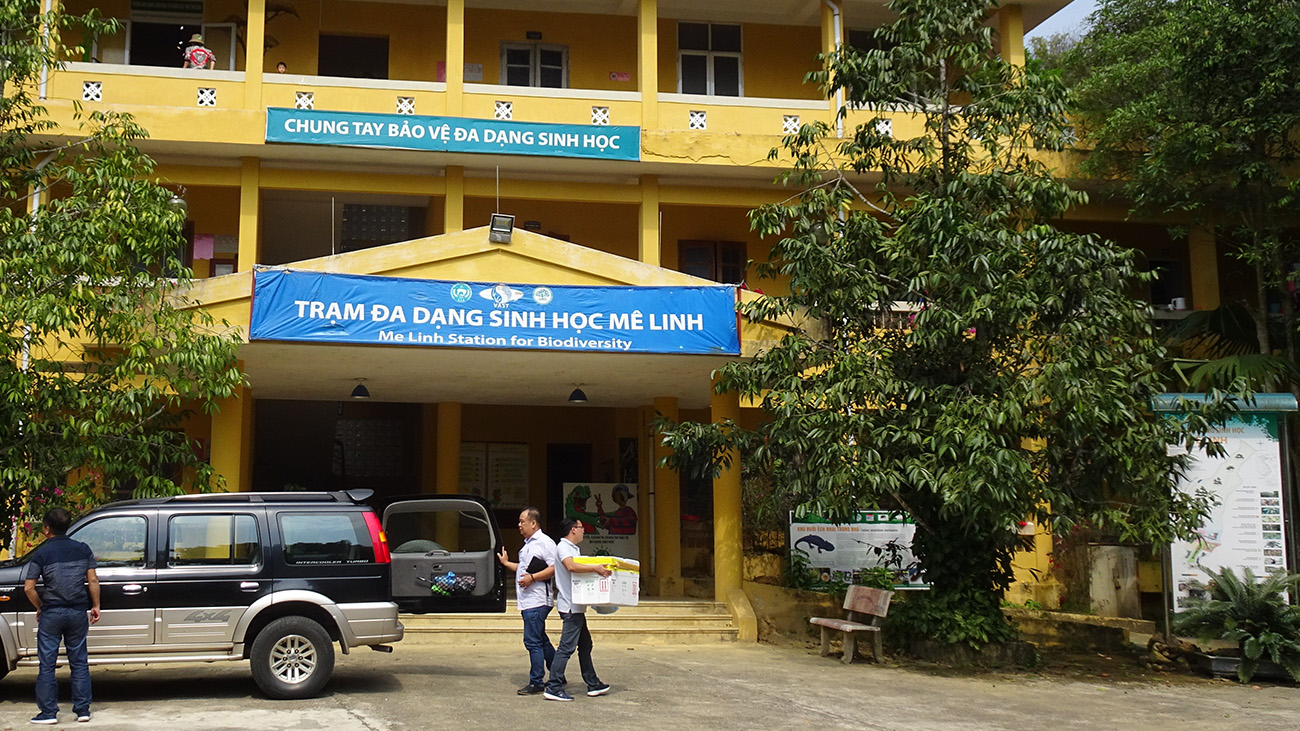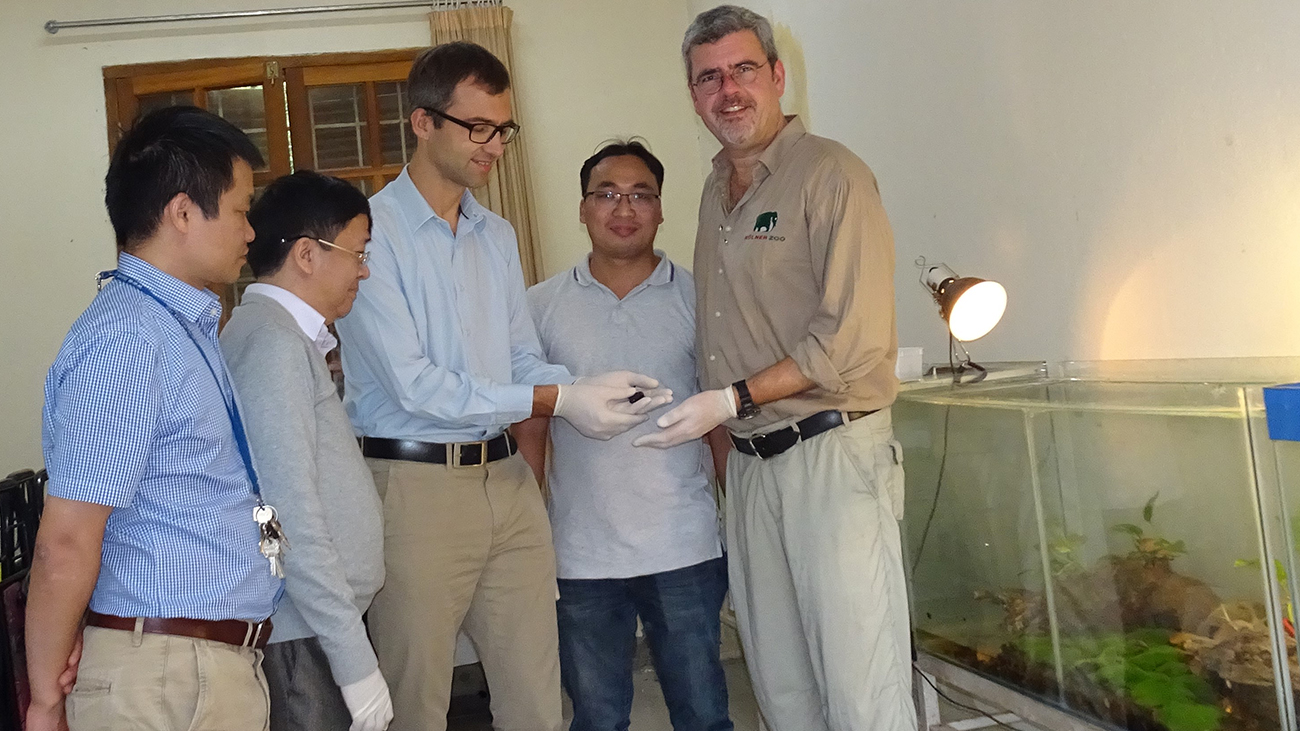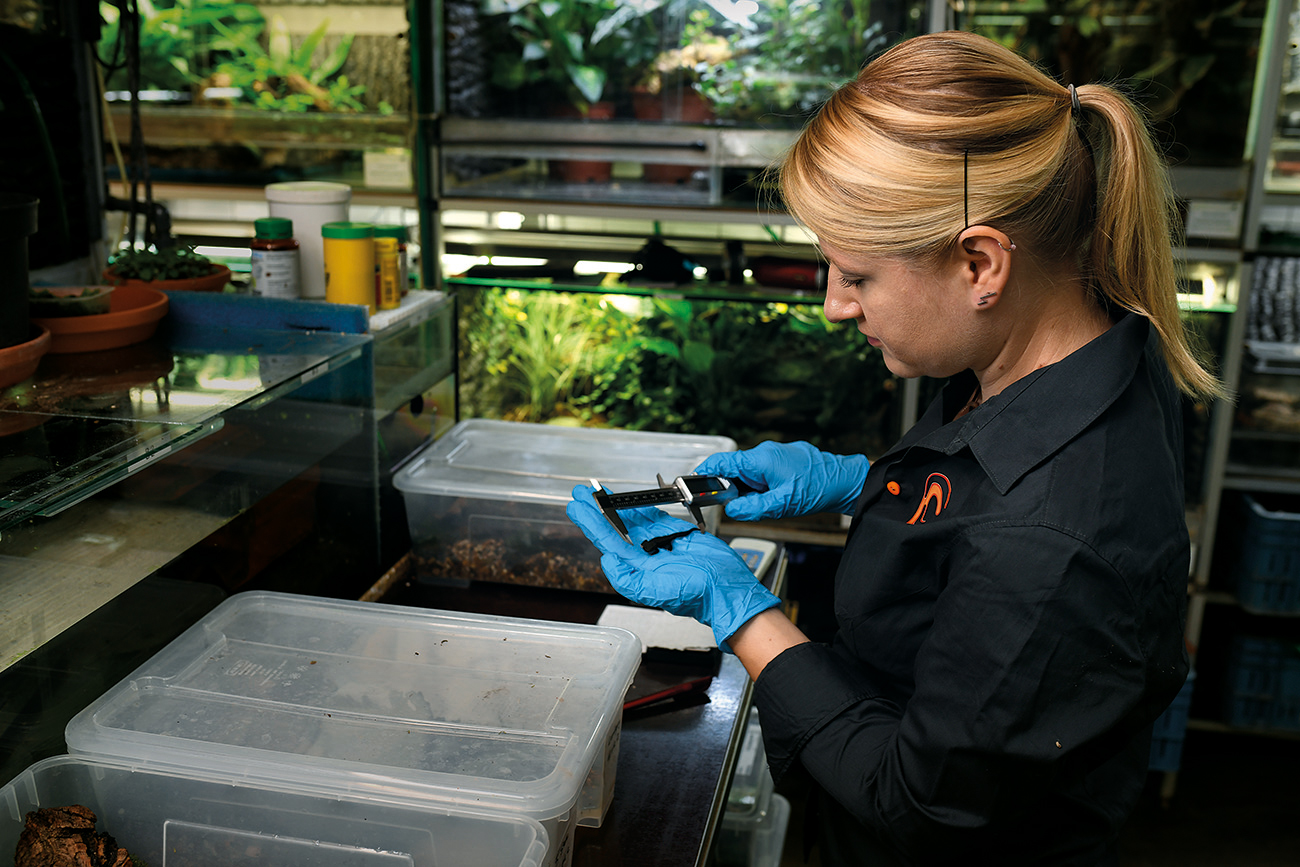Vietnamese Crocodile Newt
Tylototriton vietnamensis
Vietnamese Crocodile Newt
Tylototriton vietnamensis
CC goal
30 breeders
Status 11/2025
CC goal
185 animals
Status 11/2025
CC goal
30 breeders
Status 11/2025
CC goal
185 animals
Status 11/2025
A newt like a crocodile. Three distinctive bony ridges on the back, large bulges behind the ears, a warty skin that seems to be covered with scales – these caudate amphibians, which grow to a maximum length of 20 centimeters, are indeed reminiscent of primeval mini crocodiles. Even if their head is broad and round instead of long and pointed.
The eternal circle
From one to many
With more than 30 species, crocodile newts are the most species-rich genus of true salamanders. However, this has only been known for a short time – some crocodile newts, which were considered to be common and widespread, were actually several species. A treasure of biodiversity! For example, the Vietnamese crocodile newt was only “discovered” in 2005. It has only been found in a few sites in the north of Vietnam.
Reinforcement for their native country
Quite uncrocodily, the newts spend most of the year on dry land, hidden on the forest floor. Only when muddy puddles and shallow pools form with the rainy season do the males move into the water. There they wait for the females. The females are somewhat shy of water and only enter it briefly to mate. The males then go to great lengths to win their favor – with persistent circling. This peculiar courtship behavior is called “circle dancing”.
The last fragments of the mini crocs' forests threaten to fall victim to coal mining
After fertilization, the female leaves the water. The male remains, hoping for further amorous adventures. The expectant mother newt lays her eggs on the bank, up to two meters from the water. With even more rain, the water level rises until the larvae finally hatch and leap into the next puddle. There, a race against time begins, because the animals, which breathe through gills, must manage their transformation before the short-term waters dry up again.
Anna Rauhaus from Cologne Zoo breeds Vietnamese crocodile newts for Citizen Conservation to conserve the rare animals in a network of zoos and private animal lovers. | Benny Trapp / Frogs & Friends
The quiet crocodile newt life could continue forever in this constant cycle of rainy and dry seasons. Unfortunately, it is uncertain whether this will be the case. The forests of the mini-crocs have been largely cleared, and the last fragments threaten to fall victim to coal mining and agriculture. Climate change also threatens the newts, which depend on the orderly arrival of the monsoon – if the rainy season is too short, an entire generation will be lost. It is quite possible that they will soon have disappeared completely from their homeland. So, it’s high time to bring them to safety in our terrariums!
For breeders
Basic information on biology and breeding
The Vietnamese crocodile newt lives at the bottom of lowland rainforests. It is kept in medium sized terrariums with a base area of 50-80 x 40-50 cm and a small water section at temperatures of 18-25 °. For reproduction, a change from dry to rainy season is crucial. The newts eat e.g. worms and isopods, the larvae eat tubifex, water fleas and others.
